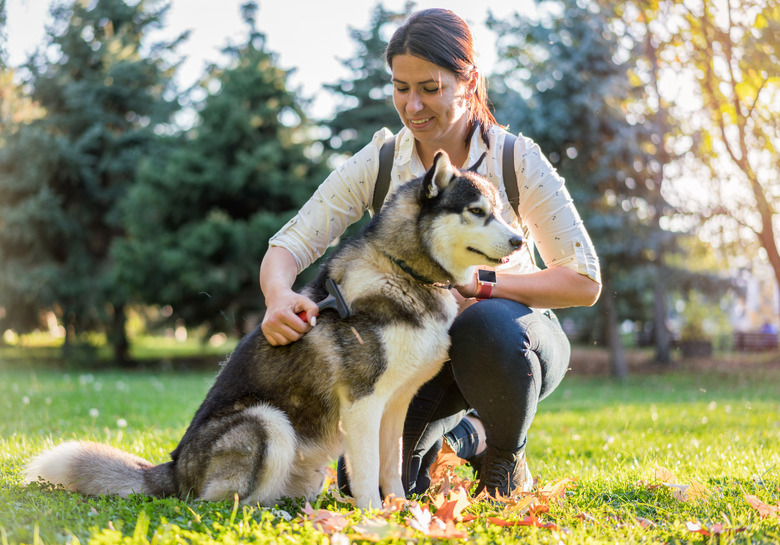Ehlers Danlos Syndrome (EDS) In Dogs: Symptoms And Treatment
While some dogs, such as bulldogs, naturally have skin folds, Ehlers-Danlos syndrome in dogs is a rare, inherited condition diagnosed in young dogs that causes abnormalities, like fragile skin and blood vessels. If your full-grown dog has loose skin that is droopy and saggy, they may be suffering from one of several genetic disorders that affects connective tissue by reducing the levels of collagen fibers in their body. Because the condition, also known as cutaneous asthenia or EDS, may cause your pet chronic joint pain, skin tears, repeated lacerations, and easy bruising as a result of minimal trauma, you will need to speak to your veterinarian about the most humane treatment options or solutions for your pet.
What is cutaneous asthenia in dogs?
What is cutaneous asthenia in dogs?
Cutaneous asthenia, also known as Ehlers-Danlos syndrome, describes a range of conditions characterized by a lack of collagen in an animal's skin. Often diagnosed at a young age since signs can be seen from birth, a lack of collagen structure can cause affected dogs to have loose, fragile skin as well as hyperflexible joints. Observed in a range of animals, from cattle to cats, Ehlers-Danlos syndrome is thankfully rare in dogs.
Causes of Ehlers-Danlos syndrome in dogs
Causes of Ehlers-Danlos syndrome in dogs
For dogs with EDS, the collagen they produce has reduced tensile strength, which creates the condition of stretchy skin on a dog and also affects the joints. It is caused by a genetic mutation. The mode of inheritance is genetic, and it is therefore inherited from one or both parents.
Symptoms of Ehlers-Danlos syndrome in dogs
Symptoms of Ehlers-Danlos syndrome in dogs
Some clinical signs that your dog may be suffering from connective tissue disease, such as Ehlers-Danlos syndrome, include:
- Frequent wounds, trauma, and bruising possibly accompanied by bleeding
- Shiny scar formation and loose, hyperextensible skin or skin folds
- Joint laxity, or excessive flexibility in joints
- Joint dislocation
- Hernia of the diaphragm or perineal area
- Vascular rupture and other eye problems, including microcornea, lens luxation, and cataract formation
If you notice any of the above symptoms, which generally appear when a dog is under a year old, seek medical attention from your veterinarian immediately.
Diagnosing Ehlers-Danlos syndrome in dogs
Diagnosing Ehlers-Danlos syndrome in dogs
Ehlers-Danlos syndrome and other connective tissue disorders are first diagnosed by your veterinarian through a physical examination and asking for a history of skin trauma and lacerations, poor healing, and scarring. Lacerations can occur from mild trauma, like the dog scratching their collar. There is a mathematical formula using the skin extensibility index that your veterinarian will use to determine if the skin extensibility falls outside the normal range. Your veterinarian will grab a handful of your dog's skin and measure how far the skin stretches, and use this measurement in the calculation. Ehlers-Danlos syndrome in dogs is also diagnosed with a skin biopsy, which would show abnormal collagen.
Treating Ehlers-Danlos syndrome in dogs
Treating Ehlers-Danlos syndrome in dogs
A genetic test is available to weed out the phenotype for the recessive and autosomal dominant variations of Ehlers-Danlos syndrome, but instances still crop up. Dogs living with Ehlers-Danlos syndrome will have special needs, such as skin fragility and difficulty with wound healing. It is up to the pet parent to carefully monitor the affected dog's surroundings and activities to ensure that no harm comes to their skin. A monthly flea preventative can help reduce scratching and therefore wounds. Injuries from scratching can also be reduced with frequent nail trimming or soft nail caps.
It's important to keep children and other pets away from affected dogs and take care when putting them on a leash or any type of restraint, as the friction involved could rip the dog's skin and cause pain and scarring.
Use child-proofing materials to protect your dog's fragile skin from sharp edges on furniture and be sure their bedding is plump and soft to avoid bruising that could easily occur from lying in one position for too long. More frequent veterinary visits will probably be required to repair wounds with sutures, and careful handling is necessary to avoid trauma. Treat all wounds promptly to keep your dog's skin from becoming infected.
The bottom line
The bottom line
Ehlers-Danlos syndrome in dogs is different from the regular skin folds that are common in some breeds. This syndrome must be carefully managed, as routine dog behavior, such as scratching or biting, can cause wounds to open in fragile skin. Many dogs with this condition can be diagnosed early in life through observation and biopsy. A veterinarian might observe hyperelasticity in the skin or joint hypermobility. It's important to work closely with their veterinarian to prevent wounds and ensure prompt, safe treatment of any injuries that occur.



